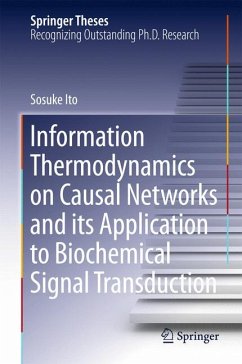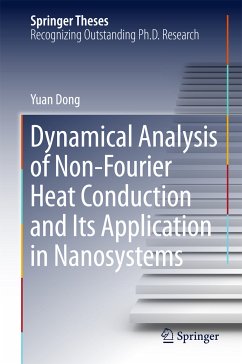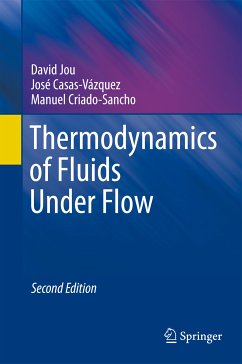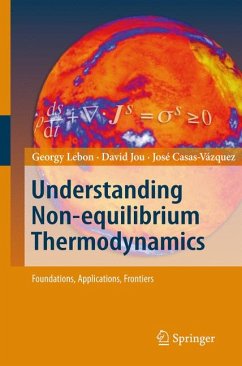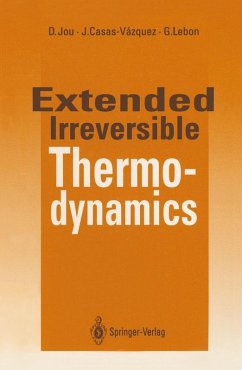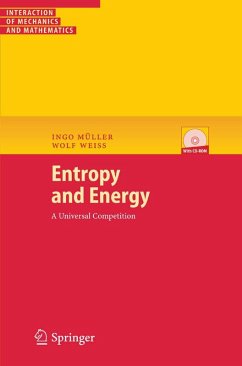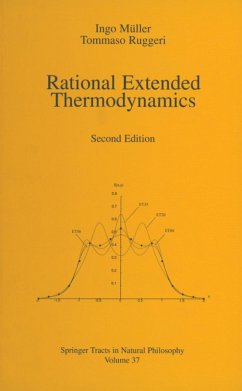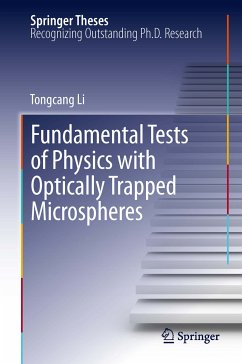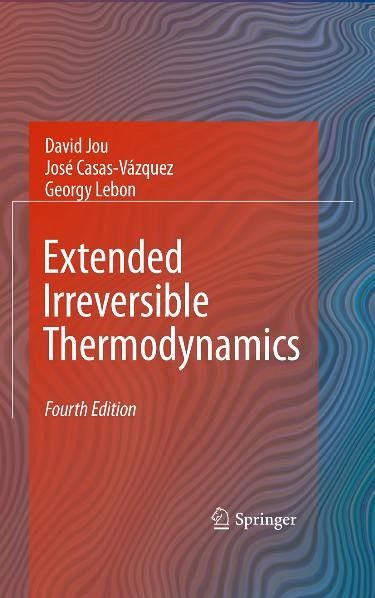
Extended Irreversible Thermodynamics (eBook, PDF)
Versandkostenfrei!
Sofort per Download lieferbar
160,95 €
inkl. MwSt.
Weitere Ausgaben:

PAYBACK Punkte
80 °P sammeln!
The fast progress in many areas of research related to non-equilibrium ther- dynamics has prompted us to write a fourth edition of this book. Like in the previous editions, our main concern is to open the subject to the widest au- ence, including students, teachers, and researchers in physics, chemistry, engine- ing, biology, and materials sciences. Our objective is to present a general view on several open problems arising in non-equilibrium situations, and to afford a wide perspective of applications illustrating their practical outcomes and con- quences. A better comprehension of the founda...
The fast progress in many areas of research related to non-equilibrium ther- dynamics has prompted us to write a fourth edition of this book. Like in the previous editions, our main concern is to open the subject to the widest au- ence, including students, teachers, and researchers in physics, chemistry, engine- ing, biology, and materials sciences. Our objective is to present a general view on several open problems arising in non-equilibrium situations, and to afford a wide perspective of applications illustrating their practical outcomes and con- quences. A better comprehension of the foundations is generally correlated to an increase of the range of applications, implying mutual feedback and cross fert- ization. Truly, thermodynamic methods are widely used in many areas of science but, surprisingly, the active dynamism of thermodynamics as a ?eld on its own is not suf?ciently perceived outside a relatively reduced number of specialized researchers. Extended irreversible thermodynamics (EIT) goes beyond the classical f- malisms based on the local equilibrium hypothesis; it was also referred to in an earlier publication by the authors (Lebon et al. 1992) as a thermodynamics of the third type, as it provides a bridge between classical irreversible thermodynamics and rational thermodynamics, enlarging at the same time their respective range of application. The salient feature of the theory is that the ?uxes are incorporated into the set of basic variables.
Dieser Download kann aus rechtlichen Gründen nur mit Rechnungsadresse in A, B, BG, CY, CZ, D, DK, EW, E, FIN, F, GR, HR, H, IRL, I, LT, L, LR, M, NL, PL, P, R, S, SLO, SK ausgeliefert werden.




